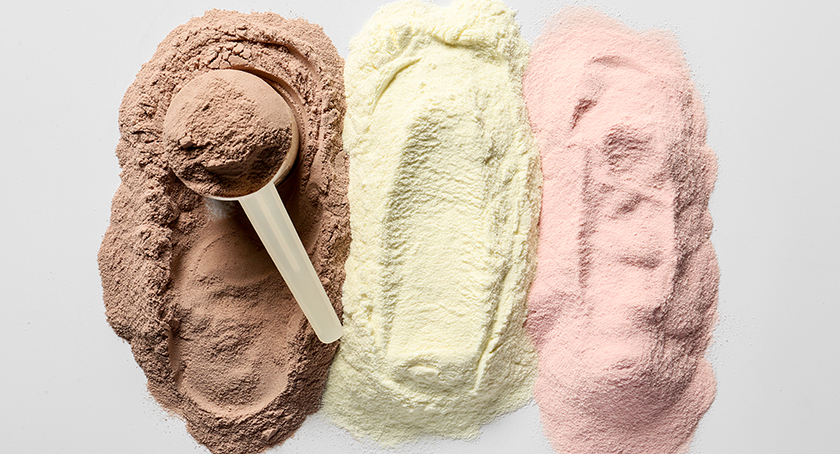Features
An Integrative Approach To Treating Attention Deficit Disorder
Several nutraceuticals offer drug-free relief.
By: Dr. Jay Lombard

Attention Deficit Hyperactivity Disorder or ADHD is regarded as the most common neurobehavioral disorder affecting children. Its prevalence is estimated to be between 3-10% of school age children with a two-three times greater preponderance in boys compared to girls. The diagnosis of ADHD is based upon clinical grounds as defined by DSM-IV criteria. Core symptoms include hyperactivity, impulsivity, distractibility and inattentiveness. Children diagnosed with ADHD commonly manifest other associated symptoms including sleep disturbances, emotional lability, disorganization in activities and/or problem solving and conduct disorder. It is also now appreciated that there is considerable comorbidity for ADHD with mood disorders, especially bipolar disorder.
The differential diagnosis of ADHD includes various neurological and medical conditions that can mimic some of the core symptoms of this syndrome. Primary sensory deficits of vision and hearing should be part of an initial medical assessment. Of note, ear infections occur with greater frequency in hyperactive children compared to controls and this may impair vestibular function. Epilepsy, Fetal Alcohol Syndrome, Fragile X Syndrome, lead poisoning, sleep apnea and thyroid abnormalities may all stimulate ADHD. The medical evaluation of children presenting with ADHD should be comprehensive and additional diagnostic studies may be required depending on the clinical circumstances and presentation.
An understanding of the pathophysiological basis of ADHD is essential because it forms the foundation and rationale of a particular therapeutic intervention. Emerging data suggests that at least three distinct subtypes of ADHD may exist: a predominant hyperactive-impulsive subtype, a predominant inattentive subtype and, most commonly, a combined hyperactive-inattentive subtype. The distinctions between these subtypes may represent unique biochemical and neural substrates.
In studies of ADHD patients, brain imaging techniques including SPECT, PET and functional MRI have consistently demonstrated abnormalities in frontal lobe function. Decreased frontal lobe blood flow and/or glucose utilization in specific brain regions may account for deficits in executive functioning; these include problems with inhibition of impulses and hyperactivity. At the Brain Behavior Center we have also detected frequent brain abnormalities in frontal and subcortical brain regions utilizing brain mapping or quantitative EEG. In these studies there is an increase in slow wave brain electrical activity in frontal lobes of ADHD children.
Abnormal brain function detected by brain imaging or brain mapping has been interpreted to signify reduced dopamine neurotransmitter activity. Dopamine plays a critical role in learning, motivation and emotional memory. Dopamine dysfunction may be particularly responsible for the hyperactive-impulsive subtype of ADHD.
Recent data also suggests a role for the neurotransmitter acetylcholine in some forms of ADHD. Impaired cognitive function, including language delay, inattentiveness and distractibility, may be mediated by acetylcholine dysfunction. This finding has particular significance for the primary inattentive subtype of ADHD, which may respond preferentially to acetylcholine augmentation strategies.
The management of ADHD includes pharmacological, nonpharmacological or complementary approaches when appropriate. Drug therapy employs the use of stimulants, antidepressants and antihypertensive agents. Stimulants including methylphenidate and Adderall have a mechanism of action that results in increased brain levels of dopamine, primarily in frontal and subcortical regions. While the efficacy of stimulants in ADHD has been clearly demonstrated, controversy surrounds its routine use. In addition to the possibility of a development of tolerance and dependence with stimulants, adverse affects are commonly encountered including reduced appetite, insomnia, headaches and the possible emergence of involuntary motor tics.
Antidepressants are regarded as second-line agents in the pharmacological management of ADHD. This line of therapy includes tricyclic compounds such as Desipramine and Nortyrptyline and the atypical antidepressant Wellbutrin. Antihypertensives including Clonodine and Guafacine are primarily used to treat hyperactivity symptoms and also used to manage sleep disturbances, aggressive behavior and tics. Adverse affects include excessive sedation and rebound hypertension during withdrawal of therapy.
The Alternative Route
Alternative treatments of ADHD should be based on addressing the underlying pathophysiological disturbances as described previously. Thus, a rationale for alternative-based therapies should include strategies to augment dopamine and/or acetylcholine neurotransmitter activity. Specific amino acid supplements, essential fatty acids, glyconutritional agents and certain vitamins may address these requirements.
Amino acids employed in the treatment of AHDH include tyrosine, theanine, S-adenosylmethionine and acetyl-carnitine. Tyrosine is a precursor of dopamine synthesis and has been studied in several open-label studies. A four-week open-label trial of L-tyrosine in 15 adults with residual type ADHD showed significant improvement on target ADHD symptoms after three weeks of therapy. A study reported in the American Journal of Psychiatry also found marked clinical response in eight of 12 adults with ADHD treated with L-tyrosine.
L-theanine is an amino acid found in green tea and is marketed in Japan as a nutritional supplement for mood modulation. Recently it has been demonstrated that L-theanine is able to cross the blood brain barrier and produce significant increases in serotonin and dopamine concentrations. In human studies, L-theanine increases the production of alpha-wave brain activity. These effects make the amino acid worthy of further study in ADHD patients.
Researchers also reported that in a four-week open-label trial of S-adenosylmethionine supplementation, six of eight adults with ADHD improved moderately to markedly with minimal side effects. The mechanism of action of S-adenosylmethionine may also be due to enhanced brain dopamine activity. Side effects of S-adenosylmethionine may include anxiety and insomnia.
Acetyl-carnitine and dimethylaminoethanol (DMAE) may exert beneficial effects in ADHD via enhanced acetylcholine function. Acetyl-carnitine, in addition to being essential for fatty acid metabolism, stimulates brain acetylcholine production. Significant improvement in vision, memory and attention were seen in Downs Syndrome patients treated with acetyl-carnitine, but no studies on ADHD have been performed to date. DMAE is the immediate precursor of choline. Unfortunately, very little of DMAE is converted to acetylcholine in the brain. DMAE was originally marketed as a prescription drug for hyperactivity, but was withdrawn because it lacked significant efficacy evidence. It is now used as a nonprescription nutrient for ADHD. DMAE may have adverse effects on homocysteine metabolism and should be avoided in pregnant women and nursing mothers. Acetyl-carnitine and other acetylcholine-enhancing agents may be most effective in the inattentive subtype of ADHD.
Glyconutritional supplements possess basic saccharides necessary for intracellular communication and neurotransmitter-receptor interactions. Ganoderma, also known as Reishi mushroom extract, is a glyconutrient that has been used in traditional Chinese medicine as a tonic and sedative. Ganoderma has recently been demonstrated to increase brain levels of cyclic-AMP, a critical intracellular messenger involved in neurotransmitter signal transduction. Thus, glyconutrients, while not exerting a direct effect on dopamine neurotransmitter activity, may enhance the latter’s function by amplifying the signal generated from interactions with its receptors.
Essential fatty acids, including omega 3 fatty acids, are primarily concentrated in mammalian brain, where they help form critical constituents of neuronal cell membranes. Omega 3 fatty acid blood levels have been demonstrated to be lower in children with ADHD than in age-matched controls. Furthermore, diets high in omega 3 fatty acids appear to be a particular protective factor against depression and recent studies have reported beneficial effects of high dose essential fatty acids in bipolar disorder. DHA is an omega 3 fatty acid and a major component of fish oil. It is necessary for optimal brain development and is the most abundant omega 3 fatty acid in human breast milk. DHA is incorporated in the cell membranes of brain cells where it functions to assist cell signaling and synapse formation. DHA may also exert beneficial activity by either influencing dopamine metabolism or indirectly by modulating neurotransmitter receptor binding. DHA has demonstrated benefit in dyslexia and at the Brain Behavior Center we are currently exploring its use and efficacy in Attention Deficit Hyperactivity Disorder.
Zinc is an essential trace element that acts as a co-factor in over 100 enzymes. Zinc is concentrated primarily in the hippocampus, a region of the brain involved in learning and memory. Zinc deficiency has adverse effects on behavior including hyperactivity, concentration impairment and subjective symptoms of edginess. Interestingly, a recent study has suggested that adequate stimulant response depends upon sufficient plasma zinc levels.
In conclusion, ADHD appears to be a heterogeneous disorder with at least three distinct subtypes. These subtypes may reflect unique brain biochemical disturbances. One subtype characterized by hyperactivity and impulsivity appears to be mediated by dopamine-hypometabolism. A second subtype, manifested by predominant cognitive symptoms including inattentiveness and distractibility, may be due to acetylcholine dysfunction. These disturbances may have clinical implications because a hyperactive-impulsive subtype of ADHD may respond preferentially to a dopamine-augmenting strategy, while an inattentive-distractible subtype of ADHD may benefit more from an acetylcholine-augmenting approach. Pharmacological approaches and nonpharmacological approaches to dopamine dysfunction include stimulants and particular amino acids such as tyrosine, theanine and S-adenosylmethionine. Acetylcholine-directed approaches may include acetyl-carnitine and possibly DMAE. Finally, a broad-based approach may be employed to enhance neurotransmitter-receptor interactions. This approach includes the utilization of omega 3 fatty acids such as DHA, Ganoderma and zinc. NW
About the author:
Dr. Jay Lombard is an Assistant Clinical Professor of Neurology at New York Presbyterian Hospital and Cornell Medical School and Director of the Brain Behavior Center in Rockland County, NY. His e-mail address is braincures@yahoo.com.




















